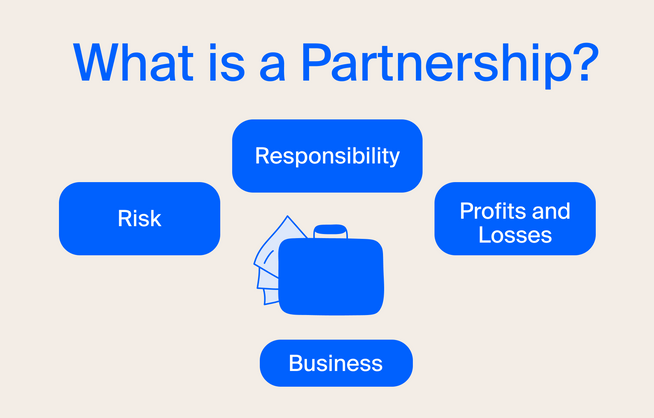

Francesca is a content creator with over 5 years of cross-industry experience that spans academic research, consulting, venture, and tech startups.
A partnership is a fairly simple business structure that involves more than one partner. Setting one up in Singapore is not complicated. There are a few important things to be aware of, especially around shared responsibilities and legal liability. In this comprehensive guide, we explain how to create a partnership.

A partnership is a business structure in Singapore where two or more individuals come together to form a profit-making enterprise. It’s a step up from a sole proprietorship with only one registered owner.
The partners are not considered separate legal entities from the business. This makes the partners personally liable for any liabilities or claims against the business. For this reason, it's not always a recommended structure to choose. There are two forms of partnerships in Singapore, each with its own pros and cons.
Related Post What Structure Should I Choose for My Company?Considering a partnership? Our company incorporation services can help you navigate the complexities of business formation and ensure that your partnership is set up correctly from the start, minimising risks and maximising opportunities for growth.

When forming this type of business, a legal document (the partnership agreement) is drawn up, which clearly outlines each partner’s equity contribution, roles and management responsibilities, the distribution of profits and losses, how decisions will be made and how the enterprise will be dissolved. All liabilities and obligations are the partners' responsibility, in line with the terms of the agreement and the type of partnership formed.
Partnerships are relatively easy to set up and are often used by small businesses, such as law firms or accounting firms. It is important to note that each partner is fully responsible for the actions of the other partners, so it is crucial to choose partners carefully and to have a clear agreement in place before disputes arise.
In Singapore, there are two main types to choose from: a general partnership (GP) and a limited partnership (LP). There are a few fundamental differences between them, particularly around the number of partners allowed, responsibilities and exposure to liability.
A general partnership is the more common and simpler legal structure. It’s quick to set up and just as simple to dissolve. A GP can have no more than twenty partners.
To form a GP in Singapore, two or more individuals enter into a partnership agreement that sets out the terms. The agreement should specify the name of the GP, the purpose of the business, and the initial capital contribution of each partner.
All partners have an equal right to make decisions and manage the business unless otherwise agreed upon in the agreement. Management responsibilities may be delegated to partners, or employees can be hired to manage the daily operations.
In a GP, each partner is personally liable for any liability that may arise. This means that if the partnership is unable to pay its debts, creditors can go after the personal assets of each owner to satisfy the debt. This is why a GP is not a recommended option, as each partner can be held responsible for the actions of another.
A GP in Singapore can be dissolved by mutual agreement of the partners or by death or bankruptcy. Upon dissolution, the assets of the partnership must be sold, and the proceeds must be shared with the partners in accordance with the terms of the agreement.
A limited partnership (LP) has two types of partners: a general partner and a limited partner. An LP has no restriction on the number of partners allowed, but there must always be at least one general and one limited partner.
Limited partners are only liable for any claims against the business to the extent of their agreed capital contribution. Their liability is limited. They do not have the right to participate in management duties, but they may receive a share of the profits. A limited partner can be an individual, company or foreign-owned company.
General partners are responsible for managing the day-to-day operations of the LP and have unlimited liability for the debts and obligations against the business. They are also responsible for ensuring that the LP complies with all legal and regulatory requirements.
A limited partnership agreement (LPA) is required to start an LP. The agreement should include the purpose of the LP, partner capital contributions, terms of profit and loss distributions, management of the LP and how the entity will be dissolved.
An LP can be dissolved when its term expires, as specified in the LPA, by mutual agreement between the partners, death, insolvency or breach of contract, or by court order.
Comprehensive company incorporation
Incorporate your company and get an Osome corporate secretary to ensure you comply with laws and regulations from the get-go.